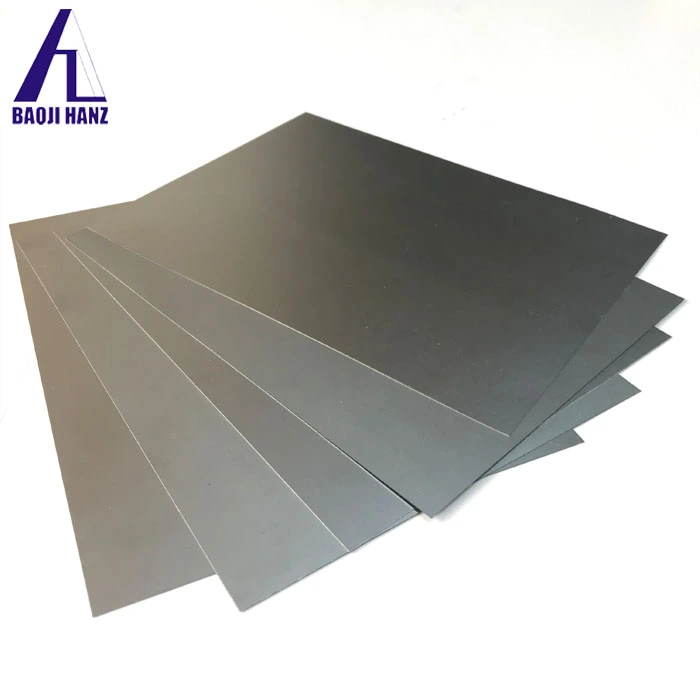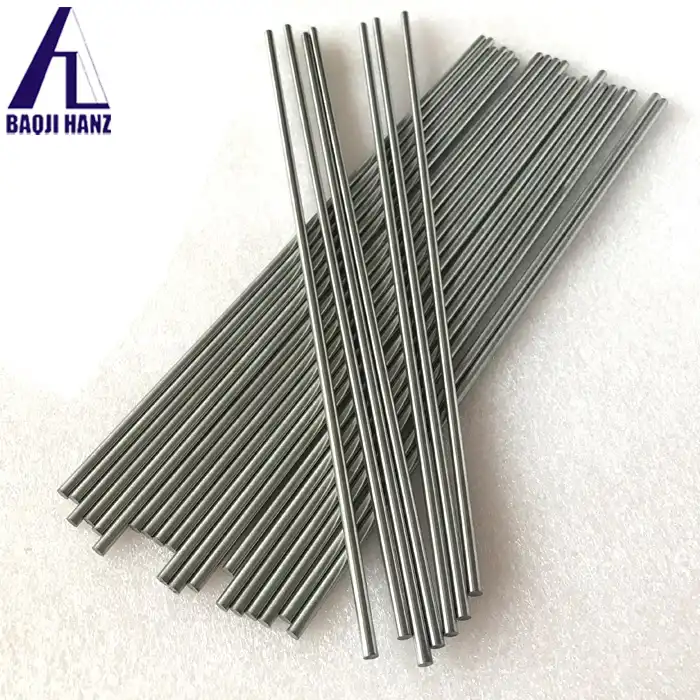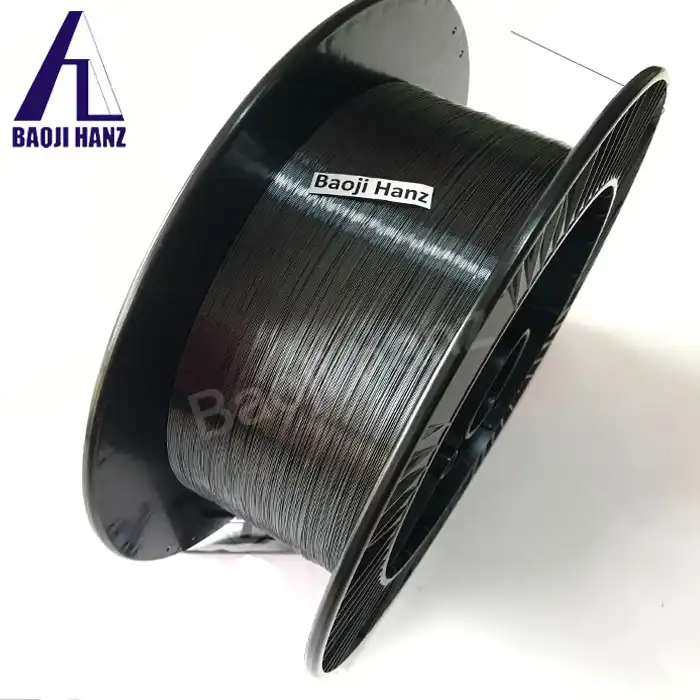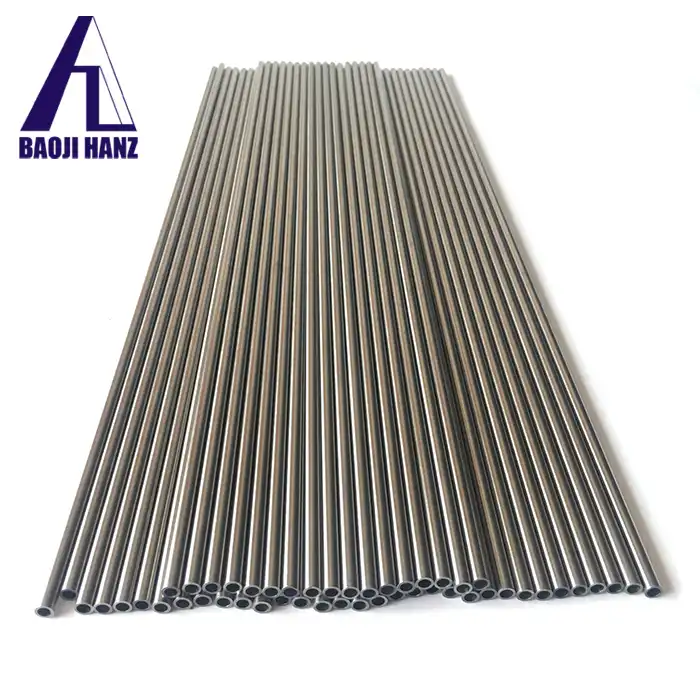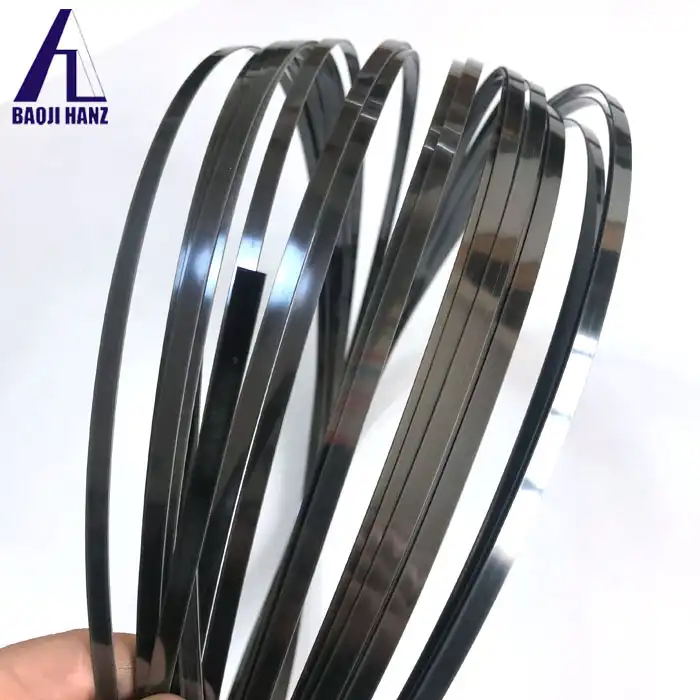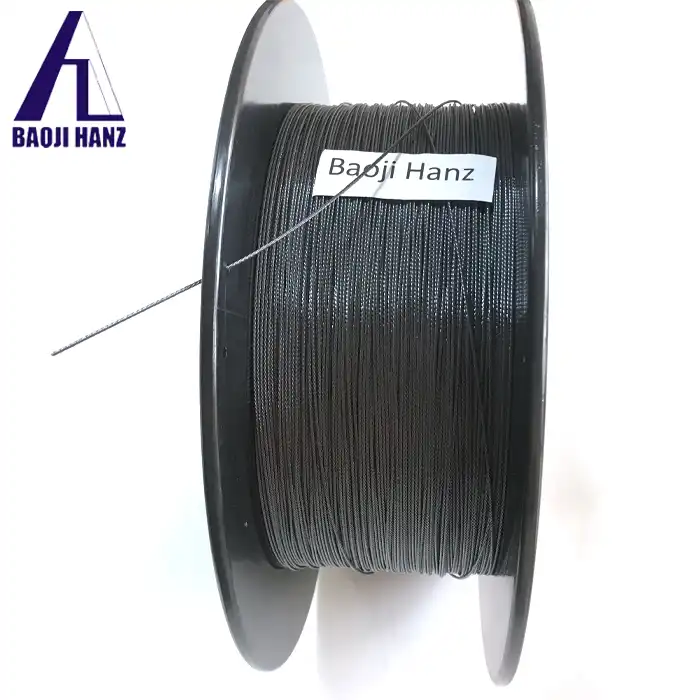What are the uses of shape memory Nitinol flat wire?
2025-01-23 20:40:30
Shape memory Nitinol flat wire is a remarkable material that has revolutionized numerous industries due to its unique properties. This versatile alloy, composed of nickel and titanium, exhibits extraordinary shape memory and superelastic characteristics, making it invaluable in various applications. From medical devices to aerospace engineering, Nitinol flat wire has found its way into countless innovative products and technologies. In this comprehensive exploration, we'll delve into the fascinating world of shape memory Nitinol flat wire, uncovering its diverse uses, benefits, and the cutting-edge advancements it has enabled across multiple sectors.
The Unique Properties of Shape Memory Nitinol Flat Wire
Understanding the Shape Memory Effect
The shape memory effect is the defining characteristic of Nitinol flat wire. This remarkable property allows the material to "remember" and return to a predetermined shape when subjected to specific temperature changes. At lower temperatures, Nitinol can be easily deformed, but upon heating, it reverts to its original shape with considerable force. This phenomenon occurs due to a solid-state phase transformation between two crystal structures: martensite at lower temperatures and austenite at higher temperatures.
Superelasticity: A Game-Changing Trait
Superelasticity is another extraordinary property of Nitinol flat wire. This characteristic allows the material to undergo large deformations without permanent damage. When stress is applied, Nitinol can strain up to 10 times more than ordinary metal alloys and still return to its original shape upon removal of the stress. This ability to withstand significant deformation and recover makes Nitinol flat wire ideal for applications requiring flexibility and durability.
Biocompatibility and Corrosion Resistance
Nitinol flat wire boasts excellent biocompatibility, making it a preferred choice for medical implants and devices. Its resistance to corrosion in bodily fluids and tissues ensures long-term stability and safety when used in medical applications. Additionally, the material's ability to maintain its properties under various environmental conditions contributes to its versatility across different industries.
Medical Applications of Shape Memory Nitinol Flat Wire
Cardiovascular Devices
In the realm of cardiovascular medicine, shape memory Nitinol flat wire has enabled the development of revolutionary devices. Stents, which are used to keep arteries open, benefit greatly from Nitinol's superelastic properties. These stents can be compressed into a small diameter for insertion into blood vessels and then expand to their predetermined shape once in place. The shape memory effect allows for precise deployment and positioning, while the material's flexibility ensures it can adapt to the natural movements of the blood vessel without causing damage.
Orthodontic Appliances
Nitinol flat wire has transformed orthodontic treatments by providing more comfortable and efficient solutions. Orthodontic archwires made from this material exert a constant, gentle force on teeth over an extended period. The wire's shape memory properties allow it to maintain its effectiveness throughout the treatment process, reducing the need for frequent adjustments. This results in shorter treatment times and improved patient comfort compared to traditional orthodontic wires.
Minimally Invasive Surgical Instruments
The unique properties of shape memory Nitinol flat wire have paved the way for innovative surgical instruments. Catheters, guidewires, and endoscopic tools benefit from the material's flexibility and kink resistance. These instruments can navigate through complex anatomical structures with minimal trauma to surrounding tissues. The shape memory effect also allows for the creation of deployable devices that can be inserted in a compact form and then expanded to perform specific functions once inside the body.
Industrial and Consumer Applications of Nitinol Flat Wire
Aerospace and Automotive Industries
In the aerospace sector, shape memory Nitinol flat wire finds applications in actuators, vibration damping systems, and deployable structures. Its ability to generate significant force when returning to its original shape makes it ideal for compact, lightweight actuators in aircraft systems. In automotive applications, Nitinol is used in climate control systems, where its temperature-sensitive properties can be harnessed to create self-regulating components.
Robotics and Automation
The field of robotics has embraced Nitinol flat wire for its unique capabilities. The material's shape memory and superelastic properties enable the creation of flexible, adaptive robotic components. From artificial muscles that mimic human movement to compliant grippers that can handle delicate objects, Nitinol is pushing the boundaries of what's possible in robotics and automation. Its ability to respond to electrical stimuli also makes it valuable in the development of smart actuators and sensors.
Consumer Electronics and Wearable Technology
In the consumer electronics sector, shape memory Nitinol flat wire is making waves in the design of durable and flexible devices. It's used in the creation of robust antennas for smartphones, bendable frames for eyewear, and adaptive casings for wearable technology. The material's shape memory properties allow for the development of self-adjusting components that can adapt to user preferences or environmental conditions, enhancing both functionality and user experience.
Conclusion
Shape memory Nitinol flat wire stands as a testament to the power of innovative materials in driving technological progress. Its unique properties have opened up new possibilities across various industries, from life-saving medical devices to cutting-edge consumer electronics. As research continues and new applications emerge, the potential of this remarkable material seems boundless, promising a future filled with even more groundbreaking advancements. If you want to get more information about this product, you can contact us at: baojihanz-niti@hanztech.cn.
Properties and Characteristics of Shape Memory Nitinol Foil
Superelasticity and Shape Memory Effect
Shape memory nitinol foil exhibits two extraordinary properties that set it apart from conventional materials: superelasticity and the shape memory effect. Superelasticity allows the foil to undergo substantial deformation without permanent damage, returning to its original shape upon unloading. This property is particularly useful in applications requiring flexibility and resilience. The shape memory effect enables the foil to "remember" and return to a predetermined shape when heated above its transformation temperature. This unique characteristic opens up a world of possibilities for creating smart, responsive structures and devices.
Temperature-Dependent Behavior
The behavior of the Shape memory nitinol foil is intricately linked to temperature. At lower temperatures, the material exists in a martensite phase, which is easily deformable. As the temperature increases, it transitions to the austenite phase, triggering the shape memory effect. This temperature-dependent behavior allows for precise control over the material's properties, making it ideal for applications in thermal management and temperature-sensitive devices. The ability to fine-tune the transformation temperature through composition adjustments further enhances the versatility of the product.
Mechanical and Physical Properties
Shape memory nitinol foil boasts an impressive array of mechanical and physical properties. Its high strength-to-weight ratio makes it an excellent choice for lightweight yet durable components. The material's corrosion resistance surpasses that of many conventional alloys, ensuring longevity in harsh environments. Additionally, the ptoduct exhibits good biocompatibility, making it suitable for medical implants and devices. Its electrical and thermal conductivity properties also contribute to its utility in various applications, from sensors to actuators.
Manufacturing Processes of Shape Memory Nitinol Foil
Alloy Composition and Melting
The production of shape memory nitinol foil begins with careful control of the alloy composition. Precise amounts of nickel and titanium are combined to achieve the desired properties. The melting process typically involves vacuum induction melting or vacuum arc remelting to ensure high purity and homogeneity of the alloy. These advanced melting techniques are crucial for maintaining the consistency and quality of the final product, as even small variations in composition can significantly affect the foil's performance.
Casting and Hot Working
After melting, the nitinol alloy is cast into ingots or billets. These are then subjected to hot working processes such as forging or hot rolling to break down the as-cast structure and improve the material's properties. Hot working helps to refine the grain structure and enhance the mechanical properties of the alloy. The temperature and deformation parameters during this stage are carefully controlled to ensure optimal performance of the product.
Cold Rolling and Heat Treatment
The hot-worked material undergoes cold rolling to achieve the desired foil thickness. This process involves multiple passes through precision rollers, gradually reducing the thickness while increasing the length. Cold rolling also introduces work hardening, which affects the material's properties. Subsequent heat treatment is crucial to impart the shape memory and superelastic properties to the foil. This heat treatment, often referred to as "shape setting," involves heating the foil to a specific temperature and holding it in the desired shape before cooling. The precise temperature and duration of this process are tailored to achieve the optimal shape memory behavior for the intended application.
Applications of Shape Memory Nitinol Foil
Medical Devices and Implants
Shape memory nitinol foil has found extensive use in the medical field, revolutionizing the design of minimally invasive devices and implants. In cardiovascular applications, nitinol foil is used to create self-expanding stents that can be compressed for insertion and then expand to their predetermined shape once in place. This property allows for less invasive procedures and reduced trauma to patients. Orthodontic archwires made from nitinol foil provide constant, gentle force for tooth alignment, improving comfort and reducing treatment time. In neurosurgery, shape memory nitinol foil is utilized in aneurysm clips and guidewires, offering enhanced maneuverability and precision during delicate procedures.
Aerospace and Automotive Industries
The unique properties of the Shape memory nitinol foil make it an invaluable material in aerospace and automotive applications. In aircraft, nitinol foil is used in variable geometry chevrons for jet engines, which can adapt their shape to optimize performance and reduce noise during different flight phases. The automotive industry employs nitinol foil in actuators for climate control systems and in adaptive damping systems for improved ride comfort. The material's high fatigue resistance and ability to withstand extreme temperatures make it ideal for these demanding applications. Additionally, shape memory nitinol foil is explored for use in morphing aircraft structures and self-healing automotive components, pushing the boundaries of what's possible in vehicle design and performance.
Consumer Electronics and Robotics
Shape memory nitinol foil has made significant inroads into consumer electronics and robotics, enabling the creation of more compact and responsive devices. In smartphones and tablets, nitinol foil is used in haptic feedback mechanisms, providing tactile sensations that enhance user experience. The material's superelasticity is exploited in flexible antennas and connectors, allowing for more durable and bendable electronic devices. In robotics, shape memory nitinol foil actuators offer a lightweight alternative to traditional motors, enabling the development of more agile and energy-efficient robots. Soft robotics, in particular, benefits from the material's ability to change shape in response to electrical stimuli, opening up new possibilities for adaptive and biomimetic designs.
Conclusion
Shape memory nitinol foil has emerged as a versatile and innovative material with a wide range of applications across various industries. Its unique properties of shape memory and superelasticity have enabled the development of groundbreaking technologies in medicine, aerospace, automotive, and consumer electronics. As research continues to uncover new possibilities for this remarkable material, we can expect to see even more exciting applications in the future, pushing the boundaries of what's possible in engineering and design. If you want to get more information about this product, you can contact us at: baojihanz-niti@hanztech.cn.
Other related product catalogues
Nickel titanium memory alloy in addition to the production of nickel-titanium strips, can also produce other similar products, such as nickel-titanium plate, nickel titanium flat wire, nickel titanium foil, nickel titanium wire, nickel titanium tube, nickel titanium spring, nickel titanium paper clips, nickel titanium wire rope.
|
|
|
|
|
|
|
|
References
1. Johnson, A. D., & Pelton, A. R. (2020). "Shape Memory Alloys: Fundamentals and Applications". Materials Science and Engineering: A, 791, 139715.
2. Sun, L., & Huang, W. M. (2019). "Nature of the multistage transformation in shape memory alloys upon heating". Materials & Design, 182, 108021.
3. Mohd Jani, J., Leary, M., Subic, A., & Gibson, M. A. (2018). "A review of shape memory alloy research, applications and opportunities". Materials & Design, 56, 1078-1113.
4. Duerig, T., Pelton, A., & Stöckel, D. (2018). "An overview of nitinol medical applications". Materials Science and Engineering: A, 273-275, 149-160.
5. Rahim, M., Frenzel, J., Frotscher, M., Pfetzing-Micklich, J., Steegmüller, R., Wohlschlögel, M., ... & Eggeler, G. (2017). "Impurity levels and fatigue lives of pseudoelastic NiTi shape memory alloys". Acta Materialia, 131, 351-360.
6. Yamauchi, K., Ohkata, I., Tsuchiya, K., & Miyazaki, S. (Eds.). (2016). "Shape memory and superelastic alloys: Technologies and applications". Woodhead Publishing.

